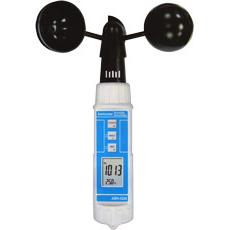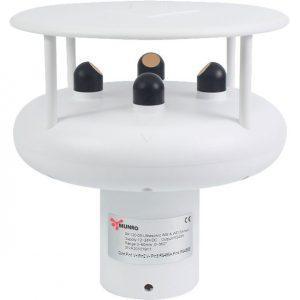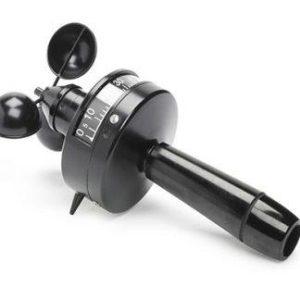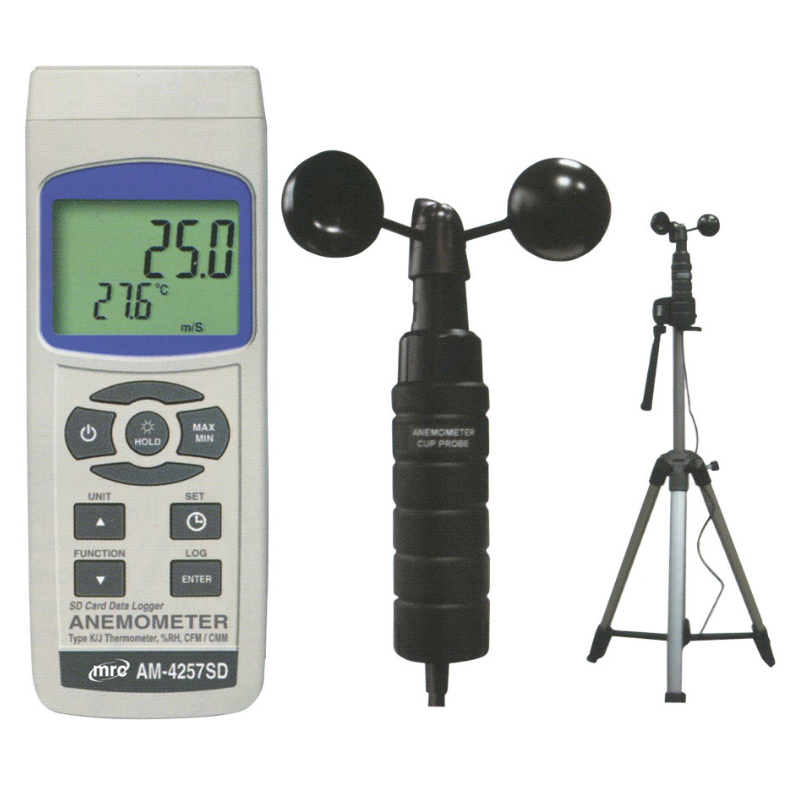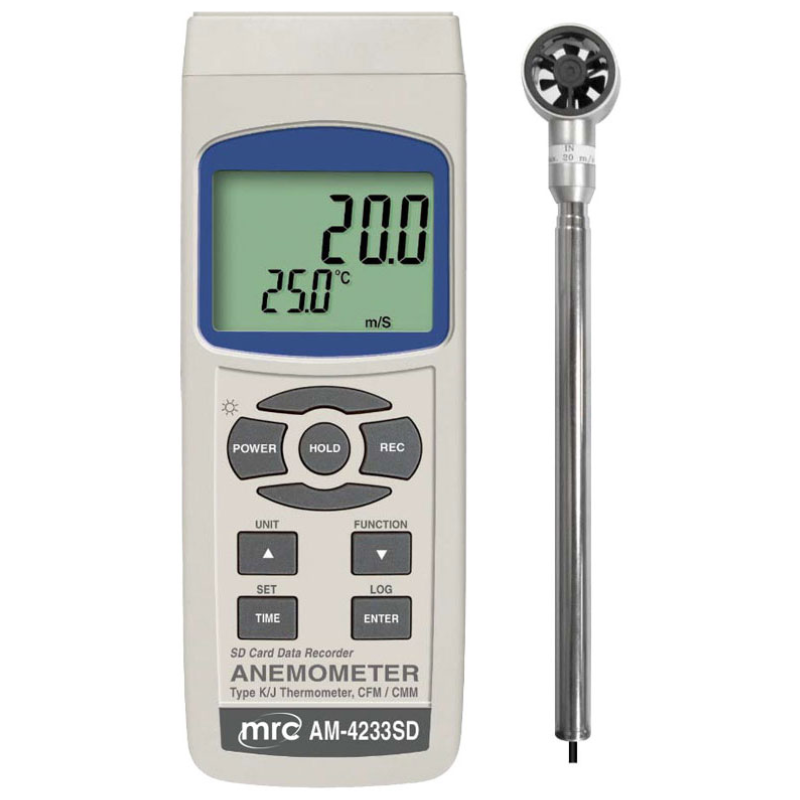An anemometer is an instrument used to measure wind speed and is often used in weather stations. There are many different types of anemometers, but they all work by measuring the force of the wind on a rotating or moving object. Meteorologists use anemometers to help them predict weather patterns and forecast storms.
Wind speed is usually measured in kilometers per hour (kph) or miles per hour (mph). Anemometers can measure the average wind speed and the gusts, which are sudden bursts of wind. These meters are available in manual and digital formats that you can read on the device or connect to a computer.
Why is it recommended to use Anemometers?
Anemometers are important tools that help us understand and predict the weather. By measuring the speed of the wind, they give us information about the direction in which the wind is blowing and how strong it is. You can use this information to forecast storms and other weather events. Anemometers can also measure wind speed for other purposes, such as determining if an area is suitable for wind energy production.
What type of Anemometers is suitable for us
There are many different types of anemometers, but they all work by measuring the force of the wind on a rotating or moving object. There are various types of anemometers, each with its features and applications.
Cup Anemometer:
A cup anemometer is a device used to measure wind speed. This instrument consists of three or four cups linked to horizontal arms mounted on a pole or tube. These are set on a vertical axis; as the wind blows, the cups rotate at speed proportional to the wind’s velocity. Cup anemometers are commonly used in weather stations and for aeronautical purposes. In addition, some newer versions can measure wind direction and speed. Cup anemometers offer several advantages over other wind measuring devices, including low cost and high accuracy at low wind speeds. However, they tend to be less accurate at higher wind speeds and can be easily damaged by strong winds or harsh weather conditions. Overall, the cup anemometer remains one of the most widely used instruments for measuring wind speed and direction.
Hot Wire Anemometer:
A hot wire anemometer is a valuable tool in the field of meteorology. It uses a heated wire to measure wind velocity, making it highly accurate and able to measure even small changes in wind speed. The hot wire quickly cools as it moves through the air, allowing it to capture the slight variations in temperature caused by the wind. The device then calculates the wind speed based on this temperature change. The heat is transmitted from the wire to a sensor, which then converts the heat into an electrical signal. A computer then processes this signal to calculate the wind speed. Hotwire anemometers offer many advantages, including accuracy, low cost, and ease of use. However, they are not well suited for measuring wind speeds in very high winds or severe weather conditions. Heating, ventilating, and air conditioning (HVAC) systems also use hot wire anemometers to measure airflow.
Pressure Tube Anemometer:
The pressure tube anemometer is a device used to measure wind speed and direction. It consists of a long, thin tube with two or more openings at the end. The tube is mounted on a pole or mast and pointed into the wind. As the wind blows, air pressure builds up in the tube, causing the level of liquid inside the tube to rise. This increase in liquid level is then used to calculate the wind speed. Pressure tubes are very accurate and can be used in all types of winds, from gentle breezes to strong gusts. They are often used in weather stations and for aeronautical purposes. While pressure tubes do not have readings, you can use them with a manometer to measure wind speed.
Ultrasonic Anemometer
An ultrasonic anemometer is a device that measures wind speed and direction using sound waves. Ultrasound signals are transmitted between two transducers, and the time it takes for the signal to travel back and forth allows the device to calculate wind speed. The wind direction is determined by measuring the reversals in each pulse and calculating the difference between them. It has no moving parts, so it is unaffected by wind or rain. Ultrasonic anemometers are accurate and easy to use, making them popular for various applications, including weather monitoring, industrial process control, and wind energy assessment.
Uses Of Anemometer
The anemometer is Meteorology Equipment It is very important. this device used to measure wind speed and direction, has many uses ranging from weather forecasting to determining the optimum wind turbine power generation conditions. In industries such as aviation and shipping, anemometers are crucial in ensuring safe operations by providing up-to-date wind information. A specialized form of an anemometer, the sonic anemometer, is utilized in scientific research to determine air temperature and turbulence levels. The construction industry relies on this tool during roof and skyscraper installations to ensure proper safety precautions. Overall, using the trusty anemometer can assist with various important tasks by accurately measuring wind velocity.
Anemometers are used in a variety of settings, such as:
- Measuring wind speed for weather forecasts and climate studies
- Assessing wind conditions for construction projects or outdoor events
- Studying airflow in ventilation systems
- Measuring wind speeds for renewable energy production, such as wind turbines
- Determining wind speeds in sports, such as sailing, windsurfing, and kitesurfing
- Testing wind speeds for research purposes in various settings.
Best Anemometers
1.
Cup Anemometer Barometer/Humidity Temperature Sensor
Handheld cup anemometer with additional Barometer, Humidity, and Temperature Sensors
2.
Ultrasonic Wind Speed & Direction Sensor
SX2591 Economical Ultrasonic Wind Sensor is a fully digital detector, highprecision
sensors, integrated by the ultrasonic wind speed and direction sensors.
it can accurately and quickly detect the wind speed, wind direction; built-in
signal processing unit can output a corresponding signal in response to user
needs
3.
Handheld Anemometer
his robust instrument is made from non-ferrous metal and calibrated in a wind tunnel for maximum accuracy. It is supplied in a convenient carrying case, which offers both protection and portability.
[contact-form-7 id=”266″ title=”Contact Form”]

